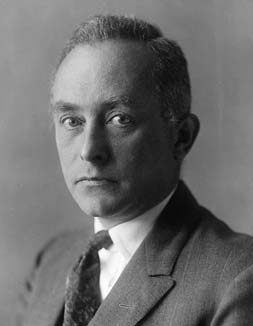Is Geocentrism Possible?by Mark WyattApril 10, 2008Every experiment ever designed to detect the motion of the earth has failed to detect earth's motion and/or distinguish it from relative counter motion of the universe. So much so that this failure has become the bedrock of relativity theory. See Galileo Was Wrong for a full explanation of these experiments. Many, many observations tell us that we are in or very near the center. But science applies unproven assumptions to make this go away (i.e., isotropy). They say that every where looks like the center. But they do not know that- they have never been anywhere else (anywhere in the solar system is our backyard). Stephen Hawking (In A Short History of Time) claims we make that assumption out of modesty (while verifying that there is no scientific evidence for it). Frankly, we just do not know. Science has its theories (based in naturalism and materialism- i.e., excluding the possiblity of God's intervention). Until we can step outside the universe and look in we cannot know. See Geocentrism 101, parts I and II for discussion of some of these issues. On the other hand, Scriptures, the Church fathers, and a number of popes do tell us that the earth is stable and that the sun moves [around the earth]. See Geocentrism 101, part III and the supplement for discussion of the religious aspect of geocentrism. A Few QuotationsNote these are based on general relativity, but not all evidence for geocentrism requires general relativity. It must be pointed out that Einstein set out to include Mach's Principle in general relativity, and to some degree succeeded. Mach's Principle is a basic statement about inertia, which supports the possibility of geocentrism.Max Born said in his famous book,"Einstein's Theory of Relativity",Dover Publications,1962, pgs 344 & 345: 
...Thus we may return to Ptolemy's point of view of a 'motionless earth'...One has to show that the transformed metric can be regarded as produced according to Einstein's field equations, by distant rotating masses. This has been done by Thirring. He calculated a field due to a rotating, hollow, thick-walled sphere and proved that inside the cavity it behaved as though there were centrifugal and other inertial forces usually attributed to absolute space. Thus from Einstein's point of view, Ptolemy and Corpenicus are equally right. Einstein and Infeld, The Evolution of Physics, p.212 (p.248 in original 1938 ed.); Note: CS = coordinate system 
The struggle, so violent in the early days of science, between the views of Ptolemy and Copernicus would then be quite meaningless. Either CS could be used with equal justification. The two sentences, 'the sun is at rest and the earth moves,' or 'the sun moves and the earth is at rest,' would simply mean two different conventions concerning two different CS. George Ellis, a famous cosmologist, in Scientific American, "Thinking Globally, Acting Universally", October 1995 
People need to be aware that there is a range of models that could explain the observations,” Ellis argues. “For instance, I can construct you a spherically symmetrical universe with Earth at its center, and you cannot disprove it based on observations.” Ellis has published a paper on this. “You can only exclude it on philosophical grounds. In my view there is absolutely nothing wrong in that. What I want to bring into the open is the fact that we are using philosophical criteria in choosing our models. A lot of cosmology tries to hide that.” Sir Fred Hoyle,Astronomy and Cosmology - A Modern Course, (San Francisco:W. H. Freeman & Co.), p. 416,1975. 
We know that the difference between a heliocentric theory and a geocentric theory is one of relative motion only, and that such a difference has no physical significance. |